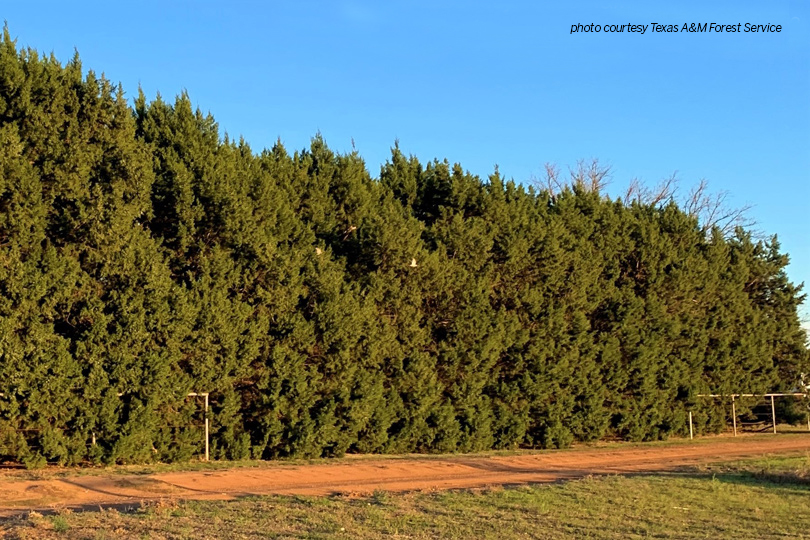By Jennifer Dorsett
Field Editor
Windbreaks are common across rural Texas, where the dense foliage surrounding homes and fields is the first line of defense against punishing winds and blowing dirt.
But there are practical applications in suburban and urban settings, too, according to John Begnaud, a retired Texas A&M AgriLife Extension Service horticulturist from San Angelo.
“Back during the Dust Bowl days in rural areas, windbreaks became a real big item because of the blowing dust and the wind, and we saw a lot of them. Then, they fell out of favor and weren’t really planted by the next generation of farmers and ranchers and homeowners, but now they’re becoming more popular again,” Begnaud said in an interview with the Texas Farm Bureau Radio Network. “Now, since it’s planting season, it’s a great time to plant or consider windbreaks. But windbreaks and plantings like this are not always just for climate. They can also be for views and noise and serve a lot of other purposes.”
Considerations when designing a windbreak include the setting, soil type, water availability and water quality. Begnaud noted plant variety selection is dependent on those factors, but evergreen plants are the mainstays of windbreak plantings.
“Pines, junipers and arborvitaes—there’s a whole host of these types of plants, and they should be adapted to your environment. We call those the anchors, these evergreen-type plants,” he said. “They don’t always have to be the tallest tree in the world. They can be a large shrub that only gets 7-10 feet tall. It depends upon how far you put them away from the protected area, your patio, your home, whatever, as to the height that is necessary.”
Factoring in aesthetics of not only the plants, but the location’s surroundings, is important when planning a windbreak, Begnaud said.
“Don’t forget views. If you’re sitting on your back patio and all of a sudden you have a whole host of wind turbines now that you don’t necessarily want to look at, you can design and sculpt a planting with mainly evergreen shrubs because you want the views blocked year-round,” he said. “Or maybe someone that lives right off the interstate, you want to block the noise or make it less prominent, but you also don’t want to see all the traffic. So, you have a reason to plant these types of plants that serve you best in a landscape, because they focus your eye away from those ugly views or they contain noise.”
He noted the best windbreak designs are not one straight line of all the same variety of plants or trees.
“Windbreaks serve a variety of purposes. They can block wind. They can block dust. They can lessen the heat during the summer in Texas,” he said. “But remember to layer them. Don’t just make one single row. They don’t have to be in a straight line, and they can be sculpted. You can make it a beautiful part of your landscape.”
More information on windbreaks, including types of windbreaks and planting advice, is available from the Texas A&M Forest Service.

